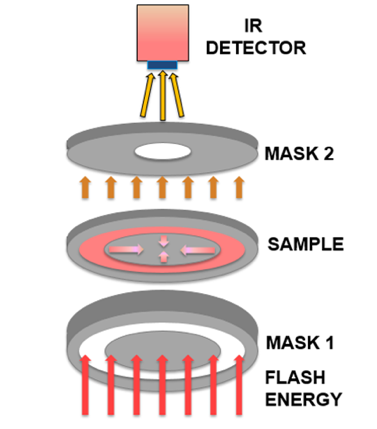Keywords: Thermal Diffusivity, TPP, Graphite, DLF 1200, In-Plane Measurements
TPP029
Anisotropic graphite has the unique property of high in-plane thermal conductivity and low thru-thickness thermal conductivity that makes it ideally suited for heat spreading and shielding applications in thin, handheld electronic smartphones and tablet computers. The ratio of in-plane to thru-thickness thermal conductivity can reach as high as 500:1 and even more. These graphite heat spreaders can be used to lower the temperature of hot components, evenly distribute surface temperature of a device, and shield sensitive components from hot spots to increase device lifetime. The flash method measures the property of thermal diffusivity and is related to thermal conductivity by specific heat and density. Reliable measurement of in-plane thermal diffusivity values are advantageous to the design and manufacture of these high performance graphite heat spreaders. Measuring the in-plane thermal diffusivity on a typical flash system that is designed to measure thru-thickness diffusivity requires a special fixture. As shown in Figure 1, the flash energy is shaped by the Mask 1 in front of the sample and deposited on the doughnut portion of that surface of the sample. The heat on the sample then flows concentrically inward towards the center of the sample. The Mask 2, between the infrared detector and the sample, confines the view spot of the infrared detector to that center spot and records the temperature rise.

| Instrument | |
|---|---|
| DLF 1200 | |
| Test Conditions | |
| Temperature Range | Room temperature — 200 °C |
| Sample holder | In-plane |
| Sample | Anisotropic graphite sheet |
| Sample size | 25.4 mm dia. and 35 μm thick |

Results
The measurement results of a 35 μm thick graphite heat spreader sample is shown in the Figure above. The in-plane thermal diffusivity value at room temperature is 916 mm2/s, which is about eight times higher than that of pure Cu, showing an excellent performance of the in-plane heat dissipation. There is a strong temperature dependence of the in-plane thermal diffusivity which shows dramatically a decrease with increasing temperature which could explain why a cell phone may shut down in hot environments.

